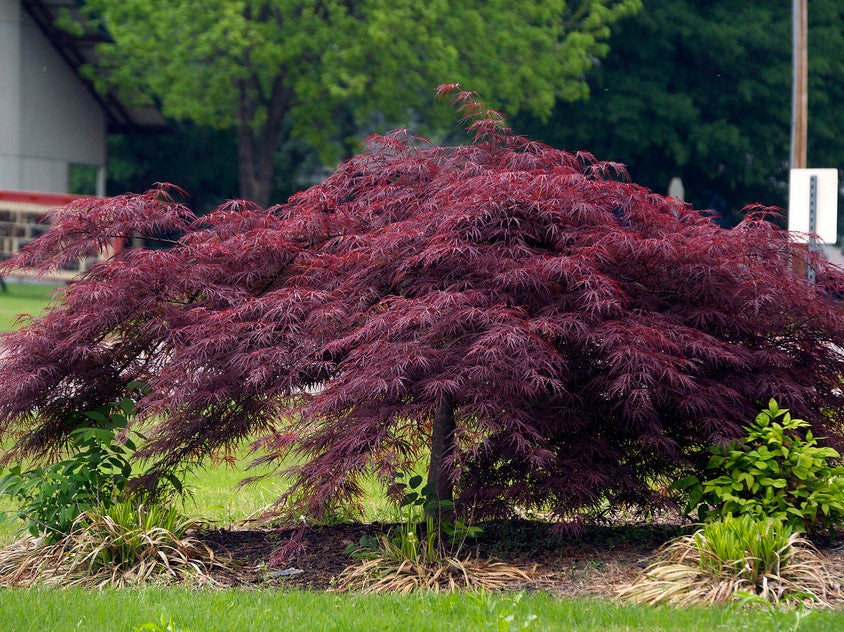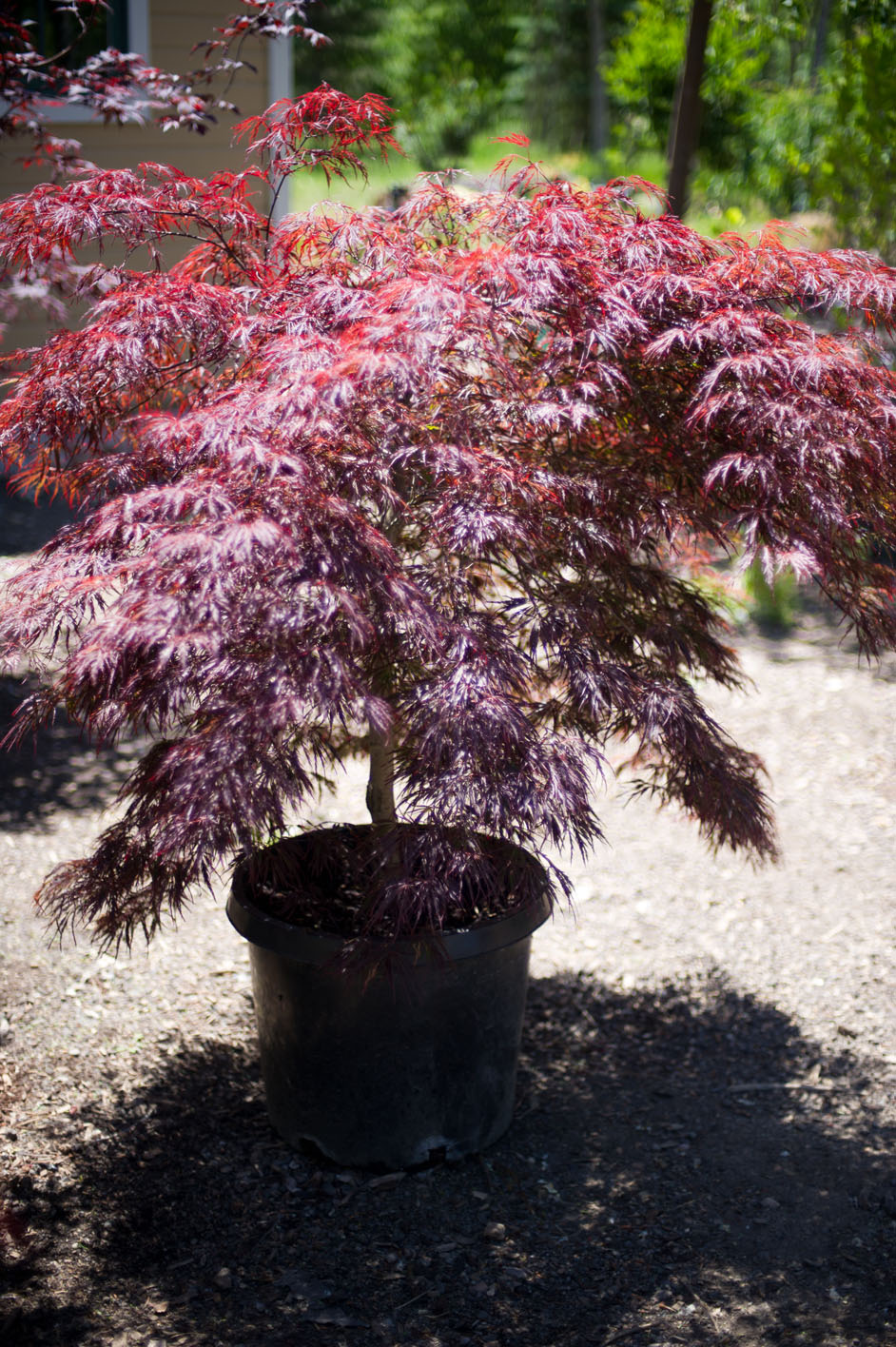


Many popular cultivars produce the familiar red foliage, such as one of the most popular Japanese trees, 'Bloodgood.' But others provide brilliant green or gold tones-and even bicolor leaves. In zones 7–8, they can benefit from planting in partial shade or dappled sunlight to protect the leaves from leaf scorch in the summer heat.
#Crimson queen japanese maple zone full#
Japanese maples should be planted in full to partial sun and in well-drained soil. They are suitable for USDA hardiness zones 5a–8b, though a few can brave zone 4 if planted in protected locations. The many different kinds of Japanese maples include Acer palmatum, Acer japonicum, and Acer pictum they are all part of the Sapindaceae (soapberry) family.

‘Sango Kaku’ is prized as one of the prettiest Japanese maple trees for its changing foliage but also bright coral bark, which gives this tree its striking contrast all year round. The foliage offers striking color throughout the growing season, becoming even more beautiful with the fall color change. Several dwarf varieties stay small and can be trained as bonsai.Īlthough the tree blooms in spring, it's the palmate leaves with five-, seven-, or nine-toothed finger-like leaves that offer the real appeal. With over a thousand varieties, it is a smallish species, with mature heights of 4–30 feet, depending on the cultivar. Japanese maple tree varieties are prized for their delicate and colorful foliage throughout the growing season and autumn. The Spruce Home Improvement Review Board.


 0 kommentar(er)
0 kommentar(er)
